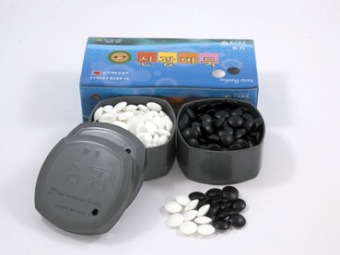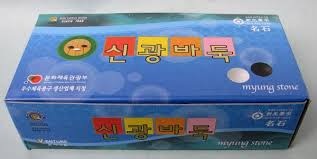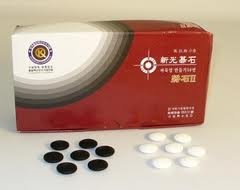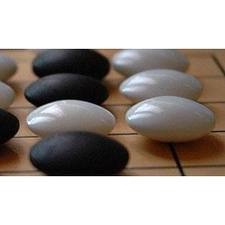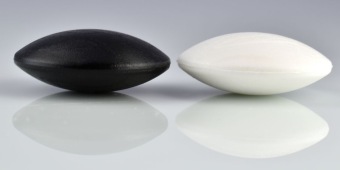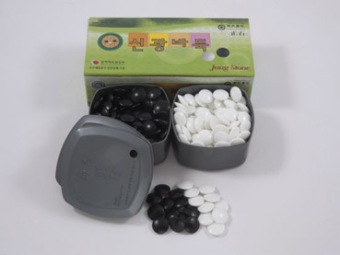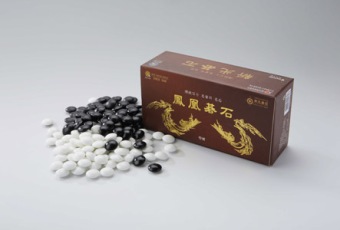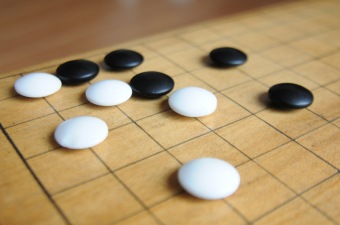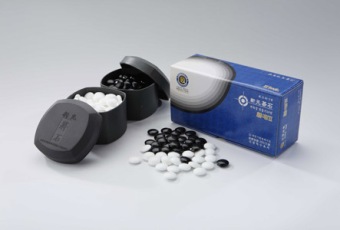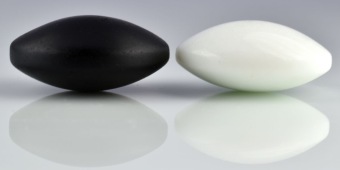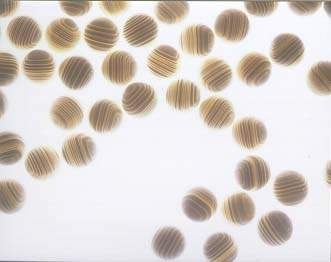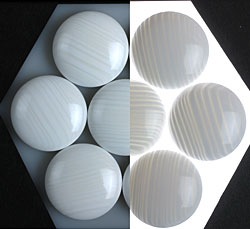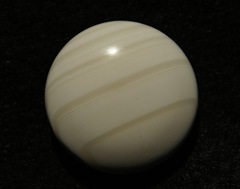Stones
Go playing stones can be made from many types of material and come in varying sizes. The most common stone shape is double convex. In China, however, players prefer to play with single-convex stones because of the louder 'snap' the flat side makes when played on the board.
A standard set of Go stones has 181 black stones and 180 white. Black has an extra stone because it plays the first move. The total of 361 stones is enough to cover every intersection on the board. Of course, you can still play a complete game with fewer stones so don't worry if you end up missing a few.
Slate & Shell
Produced in Hyuga city, Japan, shell & slate are some of the most coveted types of stones out there in the Go world. While the game of go was introduced to Japan during the Taiho era (701 A.D. – 703 A.D., it wasn't until the 17th century that the Japanese began to make stones out of clam shells. Initially made in Hitachi and Kuwana, it was during the middle of the Meiji era (1868 – 1912) that the Japanese discovered using Hyuga clam shells for stones. The clams from Okuragahama beach in Hyuga had much thicker shells and finer grains, thus cementing the area's reputation as the home for shell and slate stones.
Hyuga city is now the only place in Japan where shell & slate stones are made. However, clam shells in Hyuga are nearly extinct, and while stones produced in Hyuga are still crafted with perfected traditional techniques, almost all of the shells are imported and harvested from off the coast of Baja California, Mexico. One can still find stones made from Hyuga shells but will have to expect to pay a premium of several times the price of normal shell & slate.
The stones come in different grades rated based on their coloration and line patterns. From lowest to highest the stones are rated as Standard (Jitsuyo), Moon (Tsuki) and Snow (Yuki). Snow grade shell stones are the whitest with the fine straight lines running across the top of the stone. Tsuki stone lines are broader and curve across. Jitsuyo stones have more irregular and coarser lines with slight discoloration.
How to care for your shell & slate stones
You can clean your shell stones by simply wiping them off with a 100% cotton cloth. If the stones need more serious cleaning, mix them with a fresh egg and wash the stones in the mixture. Clean and rinse them in tepid water for a few minutes and let them dry overnight. Soap is also safe to use for cleaning. Do not use oil on shell stones!
Glass
The most common material used for stones. Glass stones are inexpensive yet have a very nice heft and feel to them. They also create a nice snapping sound when played on the board. Our glass stones are produced in South-Korea.
Size
There are two dimensions that matter for Go stones. The thickness and the diameter. The standard diameter of Go stones is 22 mm. However, smaller stones are also used. These usually have a diameter of 20.5 mm.
There is more variation in the thickness of the stones. These vary from 7 mm to 12.5 mm. The standard thickness is 8 mm. Most of the stones we sell are therefore 8 mm with a diameter of 22 mm. However, the thicker a stone is, the 'nicer' it plays. You can 'snap' a thicker stone harder on the board.
In Japan a different system is used
15 Items





